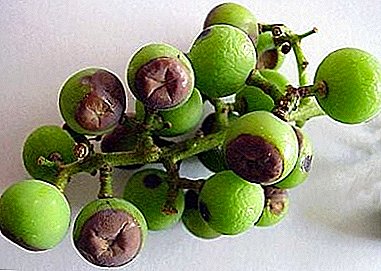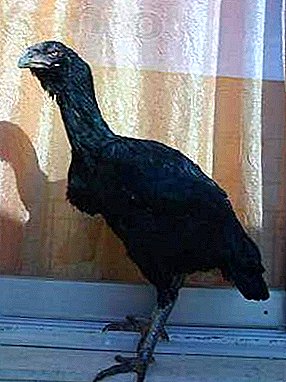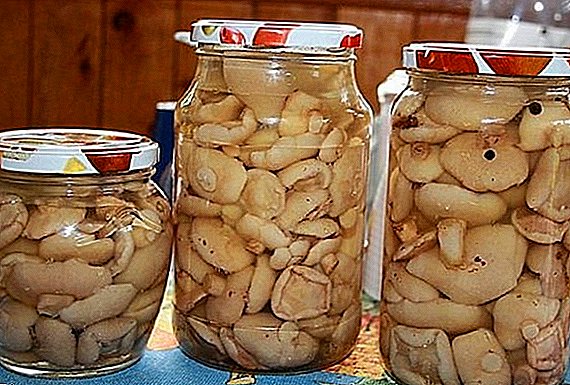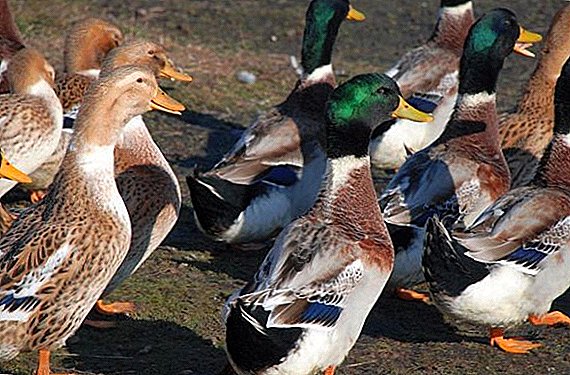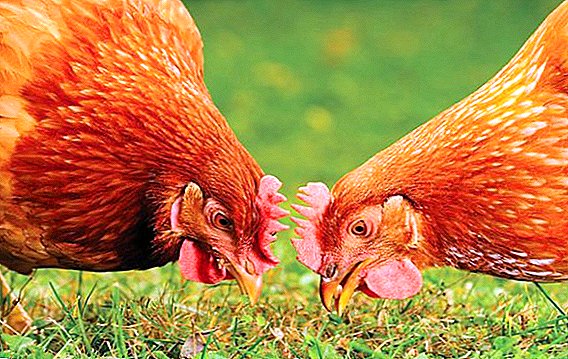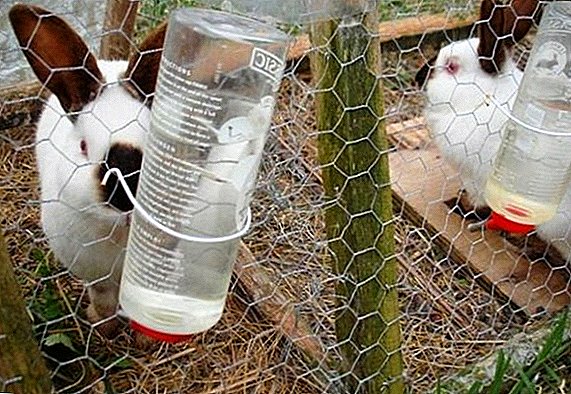 Properly formulated rabbit diet plays a key role in their normal development, and almost all breeders probably know this. However, not all of them think about the quality of eared drinking, so it is often the main cause of illness. Let's find out what eared preferences are in terms of fluid selection and how much they can drink.
Properly formulated rabbit diet plays a key role in their normal development, and almost all breeders probably know this. However, not all of them think about the quality of eared drinking, so it is often the main cause of illness. Let's find out what eared preferences are in terms of fluid selection and how much they can drink.
What and how much water do rabbits need
Water plays an important role in the body of any living thing, and rabbits are no exception. 
They need it to:
- digest food;
- optimize the absorption of nutrients from the feed;
- maintain optimal body temperature;
- allocate to the external exchange products.
At the same time, the lack of fluid threatens eared disorders of the digestive system, a violation of the kidneys and blood composition. Lack of enough drinking in a rabbit leads to eating newborns, and the lack of fluid in the cage with the young can cause illness.
Did you know? Despite the fact that water is one of the most important components of our body, it can cause intoxication. Thus, a large amount of fluid consumed over a short period of time helps to reduce the level of sodium in the blood, which, in turn, leads to an imbalance in the brain. It can cause headaches and kidney problems.
Of course, for each age category of animals there are different norms for water consumption. 
For adults
Before determining the amount of liquid a rabbit needs, it is important to consider a few important points:
- how much dry feed eared;
- what is the temperature in the room;
- age characteristics, breed and physiological features of the animal.
On average, rabbits are given water twice a day - in the morning and in the evening, although on very hot days it is better to increase this figure to three times a day. On average, adult animals require 60-130 ml per 1 kg of body weight per day, although an adult rabbit can consume 250-350 ml.
You will be interested to know what breeds of rabbits belong to meat, to down and fur, to decorative. And also familiarize yourself with the conditions of keeping such breeds of rabbits as the gray giant, the NZK, the Soviet chinchilla, the black-brown rabbit, the flander, the Angora rabbit, the ram, the white giant, marder, California, rex.
If you give out eared smaller portions of liquid, then soon you will notice problems in growth: for example, when the norm is reduced by 30-40%, the increase in body weight slows down by 10-12%. 
Pregnant and nursing rabbits
During pregnancy, females have an increased need for clean water, which is associated with the needs of baby rabbits and the formation of amniotic fluid. The daily fluid rate in this case has to be increased to 1 liter.
At the same time, when feeding the offspring, the amount of water consumed by the rabbit doubles and amounts to 2 liters per day, especially if it is soon used for re-mating. The lack of fluid in the cage can destroy the brood, which will be simply eaten by the newly made mother.
Young stock
In a young body, all metabolic processes and cell growth occur much faster, and therefore more water is needed. Therefore, the amount of liquid for growing rabbits should be 0.1 l per 1 kg of live weight, and in the hot period (when the air temperature exceeds +30 ° C) and even more - up to 1.15 l per 1 kg of live weight.
With a shortage of water, babies will be stunted, look sluggish and weak. 
Why does the rabbit drink a lot of water or hardly drink
The rate of fluid intake by each individual rabbit can vary every day. That is, if today an adult animal drinks 2 liters each, then tomorrow this value may drop to 1 liter or even more. Why we need eared water - we have already figured out, it remains to find out the reasons for abandoning it.
For proper care of rabbits, it will be useful for you to find out how many years rabbits of different breeds live, how long the moult lasts in rabbits, when and how you can allow the bunny to mate, how to help the rabbit with sunstroke, how to make a shed for rabbits with your own hands, how to score a rabbit at home, how to properly use rabbit dung as fertilizer.
The most characteristic include the following:
- dirt and bad liquid odor;
- complex design of the drinker, which does not allow the animals to easily get what they want;
- a large number of juicy and green fodder in the diet;
- pet disease, especially if apathy and refusal to eat act as additional symptoms.
To change the situation, it is important to carefully consider the possibility of each cause and, if necessary, replace water, change the water bottle or call a veterinarian.  If there is no obvious reason, and the animals continue to refuse to drink, it may be worth adding some special salts or regular sugar to it, which will cause the animal to approach the drinking bowl more often.
If there is no obvious reason, and the animals continue to refuse to drink, it may be worth adding some special salts or regular sugar to it, which will cause the animal to approach the drinking bowl more often.
Important! Water in drinking bowls needs to be changed every day. And in hot time and twice a day, each time well cleaning the capacity itself.
Can I give milk to a rabbit?
Small rabbits really drink mother's milk, but this does not mean at all that this product can also be given to adults. With age, the stomach of animals is rebuilt, and enzymes that can break down animal protein and lactose disappear in it.
This means that they will not be able to digest properly, and eared will suffer from bloating and permanent frustration.
Find out also, whether it is possible to give the rabbits burdocks, nettles, wormwood.
In the event of the death of the rabbit, it is allowed to use diluted cow's milk to raise offspring, and many rabbits, even after three weeks of age, can easily assimilate this product for some time.  Some farmers add milk to lactating baby rabbits to increase the amount of milk they produce in their bodies.
Some farmers add milk to lactating baby rabbits to increase the amount of milk they produce in their bodies.
Opinions on this matter are still ambiguous: some breeders talk about the benefits of such drinking, while others advise not to risk not to provoke an upset stomach in the newly-made mommy.
Important! Cow's milk is very fat for baby rabbits, so in the case of self-feeding of offspring, it is better to purchase so-called “bitch milk” at the pet store. This powdered substance contains all the necessary vitamins and minerals and is much easier to digest a small body.
How to water rabbits in the winter outside
Contrary to popular belief, the consumption of water by rabbits during the winter period is not only not reduced, but can also increase, which is associated with the body's expenditure on heating the body.  So that the liquid in the drinking bowl does not freeze, you can resort to one of two ways to solve the problem: buy a heated tank or constantly add warm water, watching for its sufficient amount.
So that the liquid in the drinking bowl does not freeze, you can resort to one of two ways to solve the problem: buy a heated tank or constantly add warm water, watching for its sufficient amount.
If it seems to you that a heated tank is a waste of money, then this is far from being the case. Electric drinkers greatly facilitate the task of eared, reducing the consumption of feed and water.
You can buy such a device in almost any special store or order it online, which sometimes turns out to be an even more profitable solution. The main thing is to make sure that such a device is safe and that all heating elements are well insulated.
A more economical, but physically costly, solution to the problem of water freezing in bowls is the constant topping up with warm liquid. Depending on the temperature outside, it is sometimes necessary to change it up to five times a day, which takes a lot of time.  If the owners of rabbits cannot provide them with such constant attention, then the purchase of an electric drinker would be an economically correct solution.
If the owners of rabbits cannot provide them with such constant attention, then the purchase of an electric drinker would be an economically correct solution.
Did you know? Not all smooth haired rabbits. A representative of the Angora breed with a hair length of 36.5 cm got into the Guinness Book of Records, and not everyone immediately noticed that inside this ball of wool there really is a living creature.
Is it possible to give snow instead of water
Snow or ice can be used as an emergency and temporary measure to replenish the water supply of animals in winter. Their bodies are quite adapted to this method of consuming moisture, but the energy required for melting snow requires much more than for assimilating warm fluid.
Simply put, snow can be used, but it is still not worth replacing warm water with it, since the animals will start to consume much more feed and it will still not be possible to save. Moreover, all snow (or ice) falling into the trough should be as clean as possible, without debris or dirt. 
Why do rabbits add iodine to water?
Most often, eared drinking is represented by clean water, but sometimes some substances can be added to it. Thus, as a preventive measure, young rabbits, who have recently been separated from their mother, are watered with liquid with a few drops of iodine dissolved in it.
Thus, it is possible to significantly strengthen the immunity of animals and prevent the massive loss of young animals.
Important! Water with iodine can not be poured into metal dishes, since the result of the reaction of chemical compounds is unpredictable and can adversely affect the health of animals.If possible, this method of prevention will also be useful for adults, especially if it is used regularly - every six months (the length of drinking water with iodine is 2 weeks).

What to give for the prevention of diseases
Solder rabbits to prevent various ailments by using a variety of drugs, previously dissolved in ordinary clean water.
The most popular drug options in this case are the following:
- "Gamavit" is a complex drug used in the prevention and treatment of many common ailments. It is introduced into the body of rabbits by subcutaneous injection or by feeding in, and in the latter case, twice the amount of the drug must be dissolved in 1 liter of water than is required for injection administration. Best of all, the drug is absorbed in 1-1.5 hours after feeding the animal.
- "Solikoks" is an excellent tool for feeding young rabbits under the age of three months. In this case, the prevention of coccidiosis and infestation by parasites of weaned babies is carried out according to the following scheme: on the first day 0.2 ml of the composition is drunk per head, on the second day - 0.3 ml, and on the third - 0.4 ml per one pet rabbit. After this course, it is recommended to give the children 2 ml of the drug each month, which will help prevent diseases. For adults, use 2 ml of the drug on the head. It is either poured directly into the mouth, or dissolved in water at the rate of 1 liter of the composition per 10 liter of clean drinking water. The course of treatment in this case is 2 days.
- Potassium permanganate Potassium permanganate will be especially useful for animals suffering from indigestion or having a tendency to this problem. To strengthen the body and help it cope with harmful microorganisms ingested, it is useful to feed animals 1-2 times a week with a weak solution of potassium permanganate. Alternatively, chamomile can be used according to the same scheme.
 High-quality care and timely preventive measures will not only save livestock from diseases, but also help to prevent the massive death of animals, and all that is needed is to simply observe the regime, in particular, drinking.
High-quality care and timely preventive measures will not only save livestock from diseases, but also help to prevent the massive death of animals, and all that is needed is to simply observe the regime, in particular, drinking.

